Calculus Derivatives Derivative Applications Limits Integrals Integral Applications Integral Approximation Series ODE Multivariable Calculus Laplace Transform Taylor/Maclaurin Series Fourier Series FunctionsE^x times 1 f' (x)= e^ x this proves that the derivative (general slope formula) of f (x)= e^x is e^x, which is the function itself In other words, for every point on the graph of f (x)=e^x, the slope of the tangent is equal to the yvalue of tangent point So if y= 2, slope will be 2 if y= , slopeMathe^{(xy)}=x^{y}\\/math taking natural log on both sidesmath\\/math math\ln(e^{(xy)})=\ln(x^{y})\\/math math(xy)\ln e=y\ln x\\/math mathsince

Differentiate The Function Y Ln E X Xe X Y Chegg Com
Y=(e^x-e^-x)/(e^x+e^-x) derivative
Y=(e^x-e^-x)/(e^x+e^-x) derivative-Derivative of x*e^(x) Simple step by step solution, to learn Simple, and easy to understand, so don`t hesitate to use it as a solution of your homework Below you can find the full step by step solution for you problem We hope it will be very helpful for you and it will help you to understand the solving processFind the Derivative d/dy e^(x/y) Differentiate using the chain rule, which states that is where and Tap for more steps To apply the Chain Rule, set as Differentiate using the Exponential Rule which states that is where = Replace all occurrences of with Differentiate




Differentiate With Respect Tox E X E X E X E X Maths Meritnation Com
Get stepbystep solutions from expert tutors as fast as 1530 minutes Your first 5 questions are on us!If the function were to be differentiable, then necessarily the left and right limits exist and agree, so we can check that The lefthand limit is the derivative of e − x at 0 and the right hand limit is the derivative of e x at 0 At zero the former is − 1 and the later is 1 so the limit doesn't exist, and the function isn't differentiableDerivative of (e^xe^(2x))/(e^(3x)) Simple step by step solution, to learn Simple, and easy to understand, so don`t hesitate to use it as a solution of your homework Below you can find the full step by step solution for you problem We hope it will be very helpful for you and it will help you to understand the solving process
Integral of e^x \square!Find the Derivative d/dx 1/(1e^(x)) Rewrite as Differentiate using the chain rule, which states that is where and Tap for more steps To apply the Chain Rule, set as Differentiate using the Power Rule which states that is where Replace all occurrences of with Differentiate\\text{We have, }y = e^x e^{ x}\ Differentiate it with respect to x, \\frac{d y}{d x} = \frac{d}{dx}\left( e^x e^{ x} \right)\ \ = \frac{d}{dx} e^x \frac
The derivative of e x is e x This is one of the properties that makes the exponential function really important Now you can forget for a while the series expression for the exponential We only needed it here to prove the result above We can now apply that to calculate the derivative of other functions involving the exponential Example 1 fRearranging the equation x=f(y) to obtain y in terms of x will complete the task As such, we have x=(e^ye^(y))/2 We want to solve for y to find the inverse Firstly, multiply both sides by 2 to obtain 2x=e^xe^(x) Now comes the tricky part this is actually a quadratic in disguise!2 Take the natural logarithm of both sides You need to manipulate the function to help find a standard derivative in terms of the variable x {\displaystyle x} This begins by taking the natural logarithm of both sides, as follows ln y = ln a x {\displaystyle \ln y




Lim X Gt 0 E X E X 2x X Sinx I 1 Ii 1 Iii 2 I




Why Can T Y Xe X Be Solved For X Mathematics Stack Exchange
Let's go step by step Multiple exponentiations have toptobottom associativity, which means that the topmost mathe^{x}/math is considered first EffectivelyDerivative of (6)/(e^(x)e^(x)) Simple step by step solution, to learn Simple, and easy to understand, so don`t hesitate to use it as a solution of your homework Below you can find the full step by step solution for you problem We hope it will be very helpful for you and it will help you to understand the solving processCalculus Examples Popular Problems Calculus Find the Derivative d/dx y= (e^xe^ (x))/ (e^xe^ (x)) y = ex e x ex e x y = e x e − x e x − e − x Differentiate using the Quotient Rule which states that d dxf(x) g(x) d d x f ( x) g ( x) is g(x) d dxf(x) f(x) d dxg(x) g(x)2




Proof The Derivative Of 𝑒ˣ Is 𝑒ˣ Video Khan Academy




Ex 7 3 24 Integration Ex 1 X Cos2 Ex X Dx Equals
The Second Derivative of e^x^2 To calculate the second derivative of a function, you just differentiate the first derivative From above, we found that the first derivative of e^x^2 = 2xe x 2So to find the second derivative of e^x^2, we just need to differentiate 2xe x 2 We can use the chain rule in combination with the product rule for differentiation to calculate the derivativeKnowledgebase, relied on by millions of students &Free derivative calculator differentiate functions with all the steps Type in any function derivative to get the solution, steps and graph




Differentiate With Respect Tox E X E X E X E X Maths Meritnation Com



What Is The Range Of E X E X Quora
Answer to Let f(x, y) = e^{x^2y} sin(x y) Find the second derivative \partial^2f/\partial x \partial y By signing up, you'll get thousandsBut historically I think that the definition of the exp function is ex = lim n → ∞(1 x n)n and the properties of this function comes from this definition as shown in this article Share edited Mar 23 '15 at 852 answered Dec 24 '14 at 1506Derivative of ln(e^x x*e^x), If you enjoy my videos, then you can click here to subscribe https//wwwyoutubecom/blackpenredpen?sub_confirmation=1My mat




If Y E X E X E X E X Prove That Dy Dx 1 Y 2




How To Integrate Xe X Steps Tutorial Video Lesson Transcript Study Com
The graph of f', the derivative of f, is shown on the right The graph of f' crosses the xaxis Calculus Use a symbolic differentiation utility to find the derivative of the function g(x)=x ã((x^2)1) Use the utility to graph the function and is derivative onCompute answers using Wolfram's breakthrough technology &X = 1 Solve (1) ln (e^x) = x = 1 ln (e^x) = ln (u) e ^x (Set u=e^x) = 1/u e ^x = 1/e ^x e ^x = 1 (equation 1) e^x = e^x QED




Working With Exponentials And Logarithms



Find The Derivative Of Ex E X Ex E X Stumbling Robot
Solve the differential equation {eq}\displaystyle x \frac{dy}{dx} y =e^x, \ x>0 {/eq} Derivative of Product of Two Functions Consider two functions {eq}u {/eq} and {eq}v {/eq} of a variableLet's take the derivative of what well let's prove what the derivative of e to the X is and and I think that this is one of the most amazing things depending on how you view it about either calculus or math or the universe so we want to figure out but we're essentially going to prove we've I've already told you before that the derivative of e to the X is equal to e to the X which is amazingOk, we deal with the derivative of a product As we know, (fg)' = f'g fg', where f and g are two derivable functions So f (x) = e^x, and g (x) = ln x Therefore (e^x)* (ln x) ' = (e^x)' * ln x e^x * (ln x)' = e^x * ln x e^x * 1/x Sorry i don't know how to close off the thread lol, but I was right, thanks for confirming this again 0




How To Find The Derivative Differentiate E X E X E X E X Chain Rule Derivative Collection Ap Calc Youtube



Can You Solve This Differentiation D Dx Xe X Quora
Professionals For math, science, nutrition, history, geography, engineering, mathematics, linguistics, sports, finance, music WolframAlpha brings expertlevel knowledge andSubscribe Here http//googl/2XXaLSFor more cool math videos visit our site at http//mathgotservedcom or http//youtubecom/mathsgotservedSteps for Solving Linear Equation y = \frac { e ^ { x } e ^ { x } } { e ^ { x } e ^ { x } } y = e − x e x e − x e x Cancel out e^ {x}e^ {x} in both numerator and denominator Cancel out e x e − x in both numerator and denominator y=1 y = 1




Differentiate The Function Y Ln E X Xe X Y Chegg Com




Calculus Section 5 3 Differentiate Exponential Functions If F X E X Then F X E X F X X 3 E X Y E X X Examples Find The Derivative Y Ppt Download
Explanation To find the derivative, we have to use the Quotient Rule, and, the Chain Rule, given below for ready reference The Quotient Rule d dx ( u v) = v du dx − udv dx v2 By the Chain Rule, d dx eax = eax ⋅ d dx (ax) = a ⋅ eax As a particular case of this, we have, d dx e−x = − e−x Hence, dY dxThe derivative for e^(x/y) = x yThis problem is from Single Variable Calculus, by James Stewart,If you enjoy my videos, then you can click here to subscribDerivative of the Composite Function y = e u ( x) We now consider the composite exponential of another function u (x) Use the chain rule of differentiation to write Let u (x) = \sqrt {x^21} and therefore \dfrac {d} {dx} u = \dfrac {d} {dx} \sqrt {x^21} = \dfrac {x} {\sqrt {x^21}}
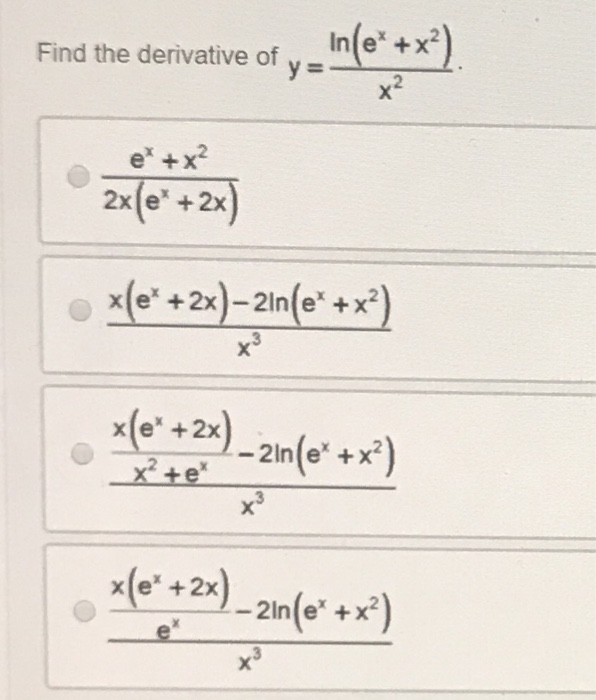



Find The Derivative Of Y Tive Of Y Ln C X2 X2 Chegg Com




If Int E X E X E 2x E 2x Dx Alog E X E X A E X E X A
Proof of e^x by ln (x) Given ln (x) = 1/x;X = 1 Solve (1) ln (e^x) = x = 1 ln (e^x) = ln (u) e ^x (Set u=e^x)The number e is defined by e = ∞ ∑ n = 0 1 n!



Dy Dx Xe Y 2x Form Differntial Eqaution Physics Forums



What Is The Limit Of E X E X X As X Tends To 0 Quora
Proving this formula by induction, https//youtube/gpjcCPENtc🔑 If you enjoy my videos, then you can click here to subscribe https//wwwyoutubecom/blackpFind the Derivative d/dx y=2/(e^xe^(x)) Differentiate using the Constant Multiple Rule Tap for more steps Since is constant with respect to , the derivative of with respect to is Rewrite as By the Sum Rule, the derivative of with respect to isDerivative of e^x e^ x = e^ x Proof of e^x by ln (x) Given ln (x) = 1/x;




Integral Of E X E X E X E X Substitution Youtube




Find The Derivatives W R T X X Sec X Log X E X Youtube
Method 1 math\displaystyle y = {e^{{e^x}}}/math Taking logarithm ( ln) on both sides, we get math\displaystyle \ln y = {e^x}\ln e/math Differentiating withSolve your math problems using our free math solver with stepbystep solutions Our math solver supports basic math, prealgebra, algebra, trigonometry, calculus and moreGet stepbystep solutions from expert tutors as fast as 1530 minutes Your first 5 questions are on us!




Finding Int 0 Infty Xe Lambda X Dx Mathematics Stack Exchange



1
The numerator is just the definition of $\mathrm e^x$, and the limit of the denominator is $1$, so we arrive at $$\frac{\mathrm d}{\mathrm dx}\mathrm e^x = \mathrm e^x$$ Share CiteDerivative of sin(e^x)(e^x) Simple step by step solution, to learn Simple, and easy to understand, so don`t hesitate to use it as a solution of your homework Below you can find the full step by step solution for you problem We hope it will be very helpful for you and it will help you to understand the solving processAward 11,162 1,354 perhaps we should ask what the questioner knows about the function e^x ie the respinders are observing that if you know two things 1) the definition of a derivative 2) the property e^ (xh) = e^x e^h, then the result is




Proof E X E Y E X Y 77neurons Project Perelman A Mathematics Project By Jad Nohra And Tom Lahore




How Do You Find The Equation Of The Tangent To The Curve Y Xe 2x At The Point 1 2 1 2e Socratic
4 Answers4 This is just a problem in dependence of the variables If x = x ( y), then your statement holds by chain rule The problem with the calculator is that it is assuming that x is a constant in terms of y Otherwise it is zero as the calculator says InProof of E(XY) = E(X)E(Y) When two random variables are statistically independent, the expectation of their product is the product of their expectations Nevertheless, I can't find a simple proof I think that in my probability books, they are skipping a few steps writting E(XY) = ∑ x ∈ D1 ∑ y ∈ D2xyP(X = x)P(Y = y) I don't understandDerivative of (e^xe^x)/3(e^xe^x) Simple step by step solution, to learn Simple, and easy to understand, so don`t hesitate to use it as a solution of your homework Below you can find the full step by step solution for you problem We hope it will be very helpful for you and it will help you to understand the solving process




Solved Differentiate The Function Y Ln E X Xe X Y Chegg Com
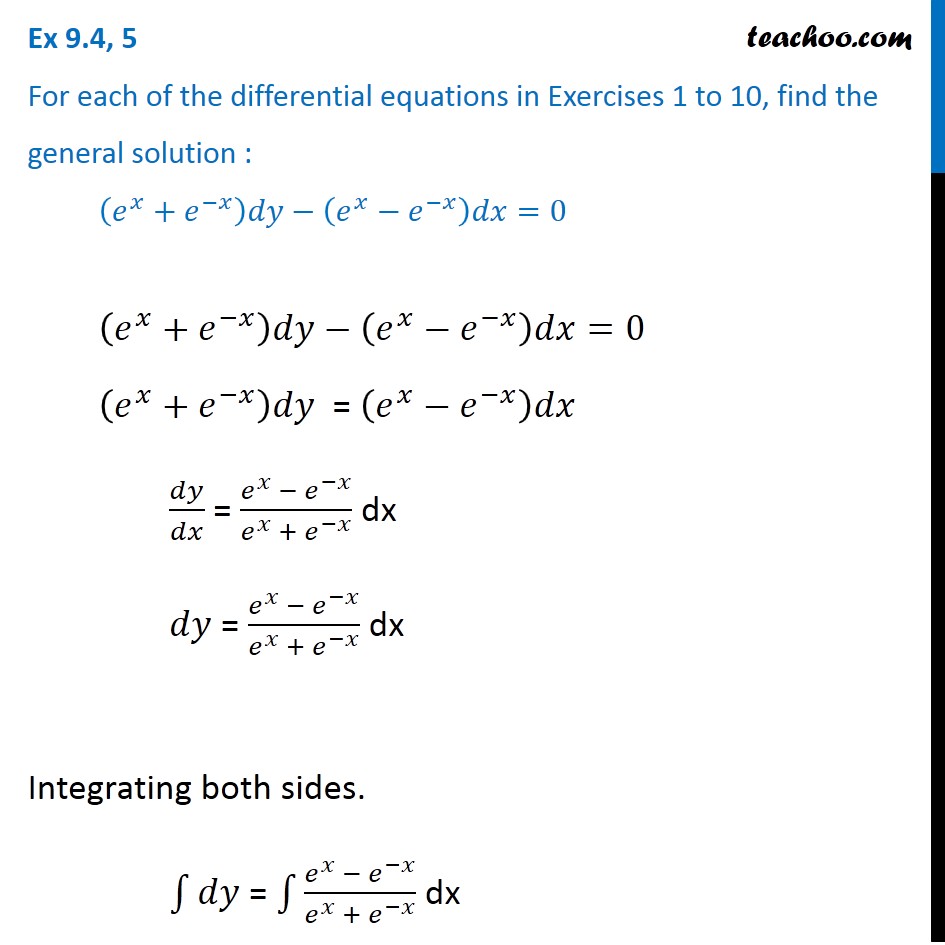



Ex 9 4 5 Find General Solution Ex E X Dy Ex E X Dx
I'll assume that you want to compute the derivative of mathy/x/math with respect to mathx,/math and that mathy/math is a function of mathx/math Use the quotient rule which in general says that math\displaystyle\left(\fracDerivative e^ {x} \square!Find the Derivative d/dx y=(e^x)/(1e^x) Differentiate using the Quotient Rule which states that is where and Tap for more steps By the Sum Rule, the derivative of with respect to is Since is constant with respect to , the derivative of with respect to is Add and Since is constant with respect to , the derivative of with




Proof E X E Y E X Y 77neurons Project Perelman A Mathematics Project By Jad Nohra And Tom Lahore




What Is The Integration Of 1 Xe X Quora
Y = e−x Let, y = eu and u = − x ∴ dy du = eu and du dx = − 1 Using Chain Rule dy dx = dy du ⋅ du dx ∴ dy dx = eu ×( −1) = −eu Subst, back u = − x ∴ dy dx = −e−xUse the derivative of natural logs rule d dx lnu = u' u We want to simplify the following d dx ln( ex ex 1) Dividing by the inner term is the same as multiplying by the reciprocal = ( d dx ex ex 1) ⋅ ( ex 1 ex) Use quotient rule to differentiate first term = ( (ex 1)(ex) − (ex)(ex) (ex 1)2) ⋅ ( ex 1 ex)
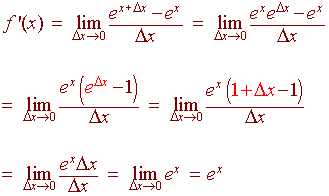



The Derivative And Integral Of The Exponential Function




How To Integrate Xe X Steps Tutorial Video Lesson Transcript Study Com




Proof E X E Y E X Y 77neurons Project Perelman A Mathematics Project By Jad Nohra And Tom Lahore




Proof E X E Y E X Y 77neurons Project Perelman A Mathematics Project By Jad Nohra And Tom Lahore




If Y E X E X E X E X Prove That Dy Dx 1 Y 2



Derivative Of E X Wyzant Lessons




The Inverse Of The Function F X E X E X E X E X 2 Is




If Sinhx E X E X 2 Then Show That The Equation Youtube




Integral Of E X E X E X E X Substitution Youtube
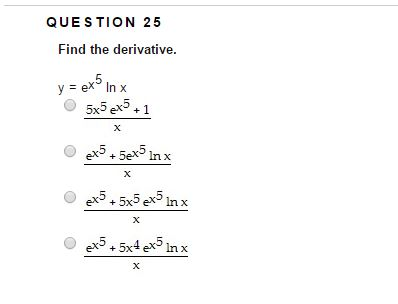



Find The Derivative Y E X 5 In X 5x 5e X 5 1 X Chegg Com




Y Ln E X Xe X Differentiate The Function Youtube
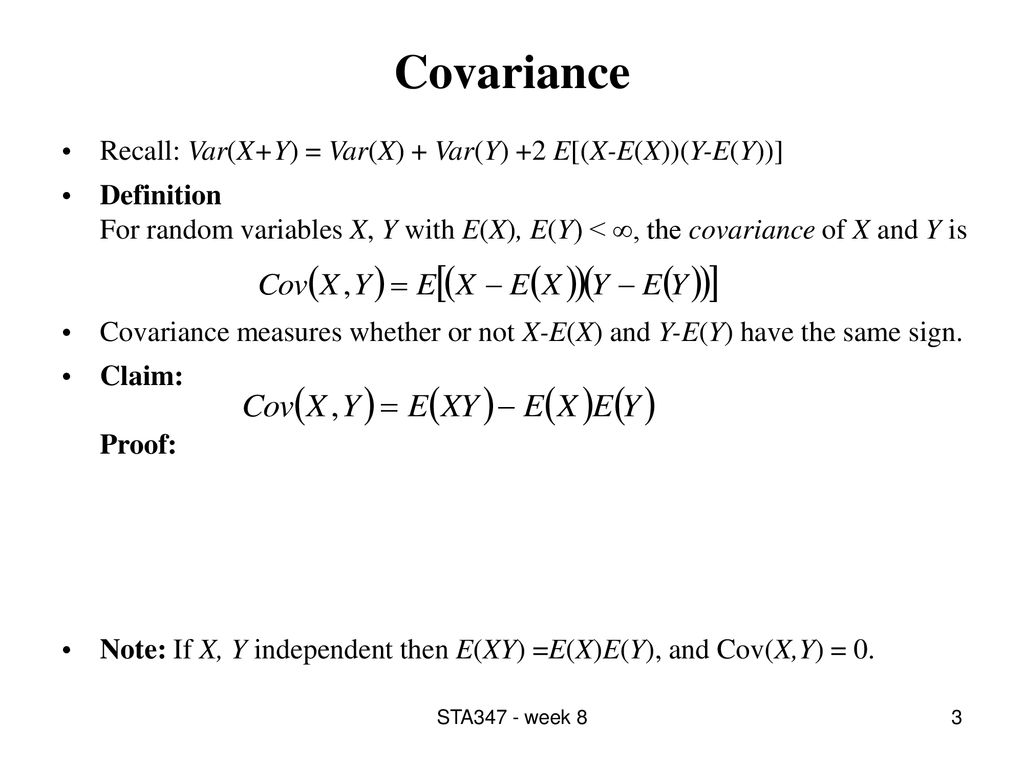



Multinomial Distribution Ppt Download



If X Y E X Y Show That Dy Dx Logx Log Xe 2 Sarthaks Econnect Largest Online Education Community




14 S Find The Fourier Transform Of The Function F X Xe X2 2 Hint
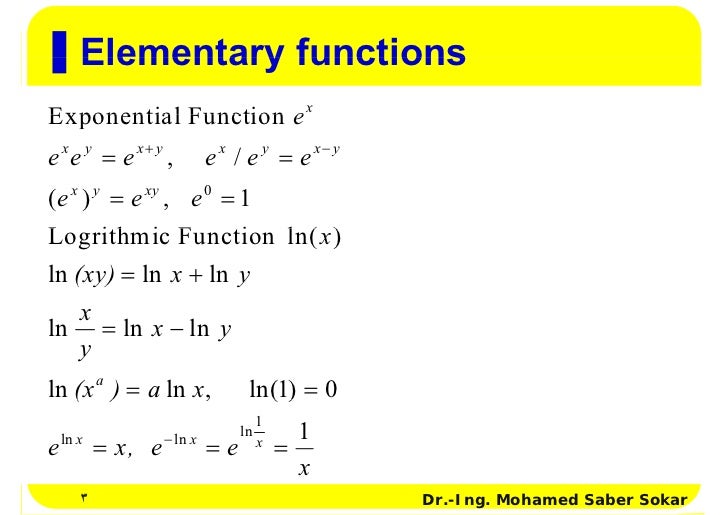



Session02 Review Laplace And Partial Fractionl




6 Derivative Of The Exponential Function




If Y E X E X 2 E X 3 E X N For 0 X 1 Then Dy




If Y E X E X E X E X Prove That Dy Dx 1 Y 2



How To Solve The Differential Equation Math Y Y Xe X Math Quora




The Inverse Of The Function F X E X E X E X E X 2 Is Given By Youtube



1




If Y E X E X E X E 1 P R O V Et H A T Dy Dx 1 Y 2 Youtube



What Is The Limit Of E X E X X As X Tends To 0 Quora




Integration By Parts X 𝑒ˣdx Video Khan Academy




Plot Of The Function F X Xe X Download Scientific Diagram




Y Xe X 2 Find The Derivative Of The Function Youtube




How To Integrate Xe X Steps Tutorial Video Lesson Transcript Study Com




Inverse Of Y Xe X Mathematics Stack Exchange




Plot Of The Function F X Xe X Download Scientific Diagram




Let F X Xe X Find Study Com



Graph Of Y Xe X The Student Room




Misc 35 Prove Definite Integral 0 1 X Ex Dx 1 Miscellaneous




Iit Jee Relations And Functions The Range Of The Function F X E X E X E X E X Is Youtube



Derivative Of E X Wyzant Lessons




The Inverse Of The Function F X E X E X E X E X 1 I
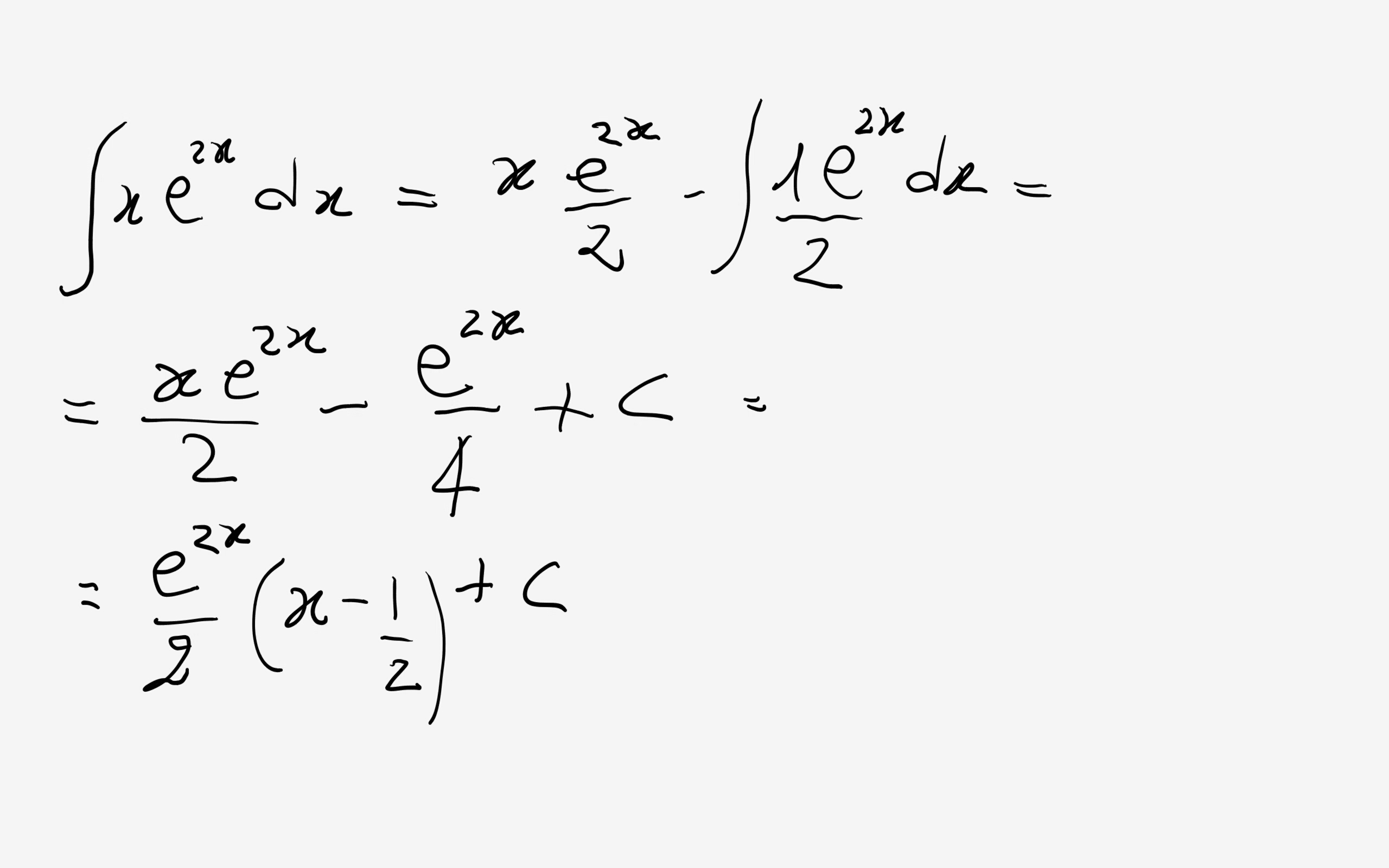



How Do You Integrate Xe 2x Dx Socratic



What Is The Second Derivative If Y Xe X Quora



1




If F R 0 2 Defined By F X E X E Xe X E X 1 Is Invertible Find F 1



Solve For X E X E X E X E X T Brainly Com




Prove That E X E X 2x 0 X 0 Hence Prove That
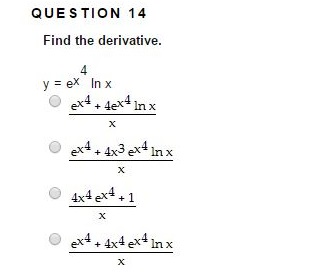



Find The Derivative Y Ex 4 Ln X E X 4 4e X 4 Ln Chegg Com




Solved What Is The Derivative Of Y Xe X Select One O Chegg Com




How Do You Determine The Maximum And Minimum Value Of The Function F X Xe X 2 Socratic



Why Is E X E Y E X Y Quora




Find The Derivative Of The Function X E X With Respect X




Differential Calculus The Derivative Or Derived Function Of




Inverse Of Y Xe X Mathematics Stack Exchange
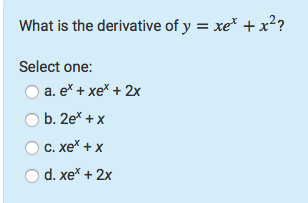



Solved What Is The Derivative Of Y Xe X2 Select One Chegg Com




How To Integrate Xe X Steps Tutorial Video Lesson Transcript Study Com




Ex 9 4 5 Find General Solution Ex E X Dy Ex E X Dx
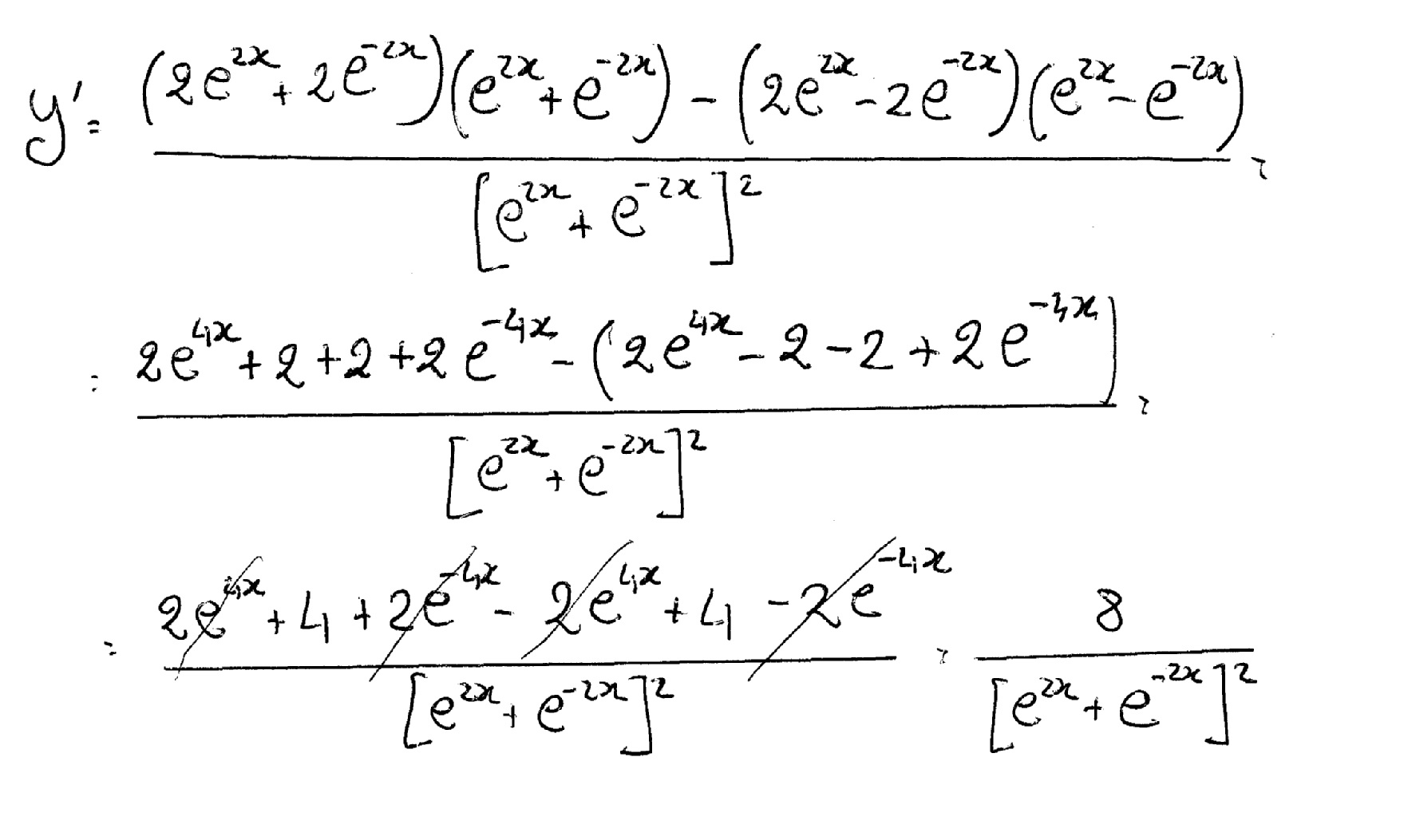



How Do You Find The Derivative Of E 2x E 2x E 2x E 2x Socratic
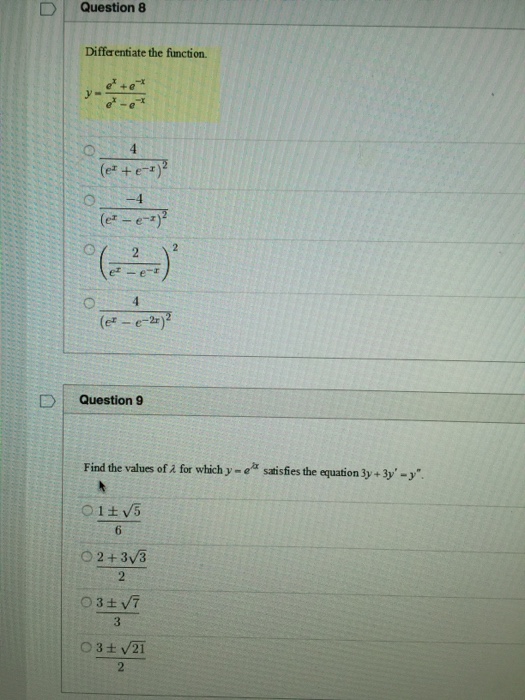



Differentiate The Function Y E X E X E X E X Chegg Com




The Product Rule Xe X Youtube



Ilectureonline



E X E X 2 Expansion



What Is The Limit Of E X E X X As X Tends To 0 Quora




Maclaurin Series Of Eˣ Video Khan Academy



Solution Consider The Function F X Xe X A State The Domain Of F B Find The Vertical Asymptotes And Horizontal Asymptotes Of The Curve Y X F X If Exist C Find




The Inverse Of The Function F Rvec X In R X Lt1 Given By F X E X E X E X E X Youtube




Derivative Of Ln E X X E X Youtube




Solve E X E X Dy Dx E X E X




Implicit Differentiation Advanced Example Video Khan Academy
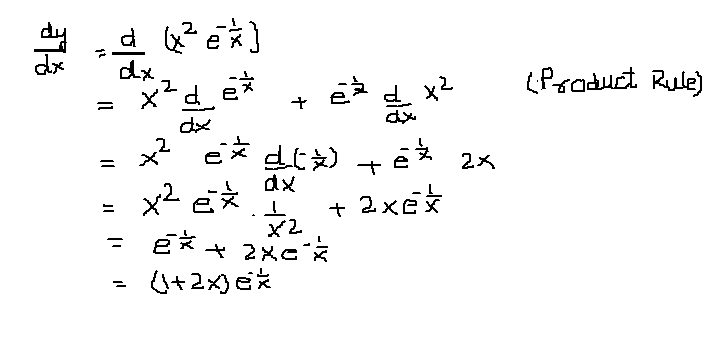



How Do You Find The Derivative Of Y X 2 E 1 X Socratic
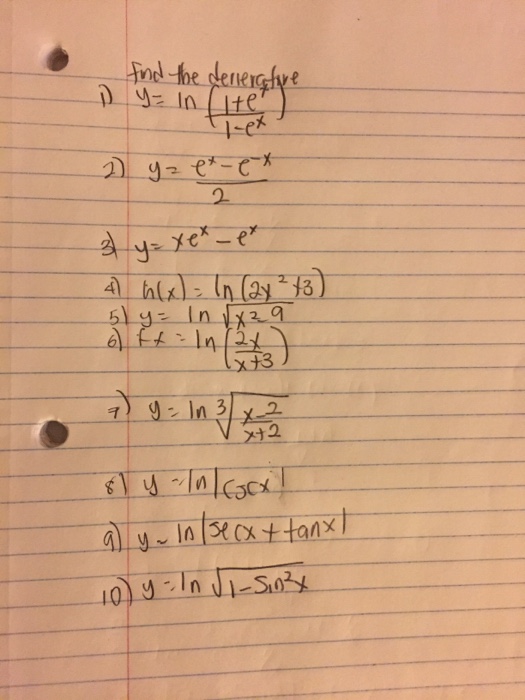



Find The Derivative 1 Y In 1 E X 1 E X 2 Y Chegg Com




Ye X Ydx Xe X Y Y 2 Dy Maths Questions



What Is The Derivative Of Y E X 1 E X 1 Quora




Solution Of X Dy Dx Y Xe X Is A Xy E X X 1 C B Xy E X X
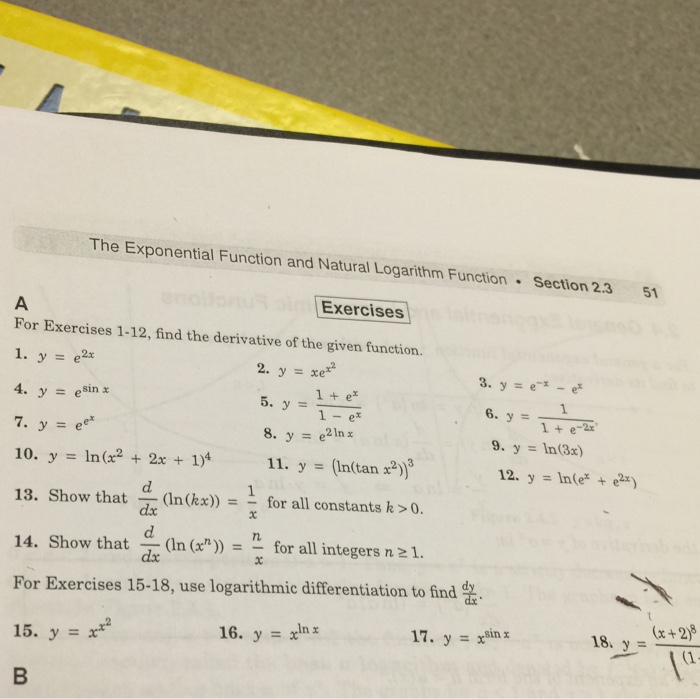



For Exercies 1 12 Find The Derivative Of The Given Chegg Com




Differentiate Xe X From First Principles



What Is The Limit Of E X E X X As X Tends To 0 Quora



Solve The Following Differential Equation X Cos Y Dy Xex Log X Ex Dx Mathematics Topperlearning Com Rn73oni66




Derivative Of 𝑒ˣ Video Khan Academy




Is E X E X 3 Equivalent To E X E X 3
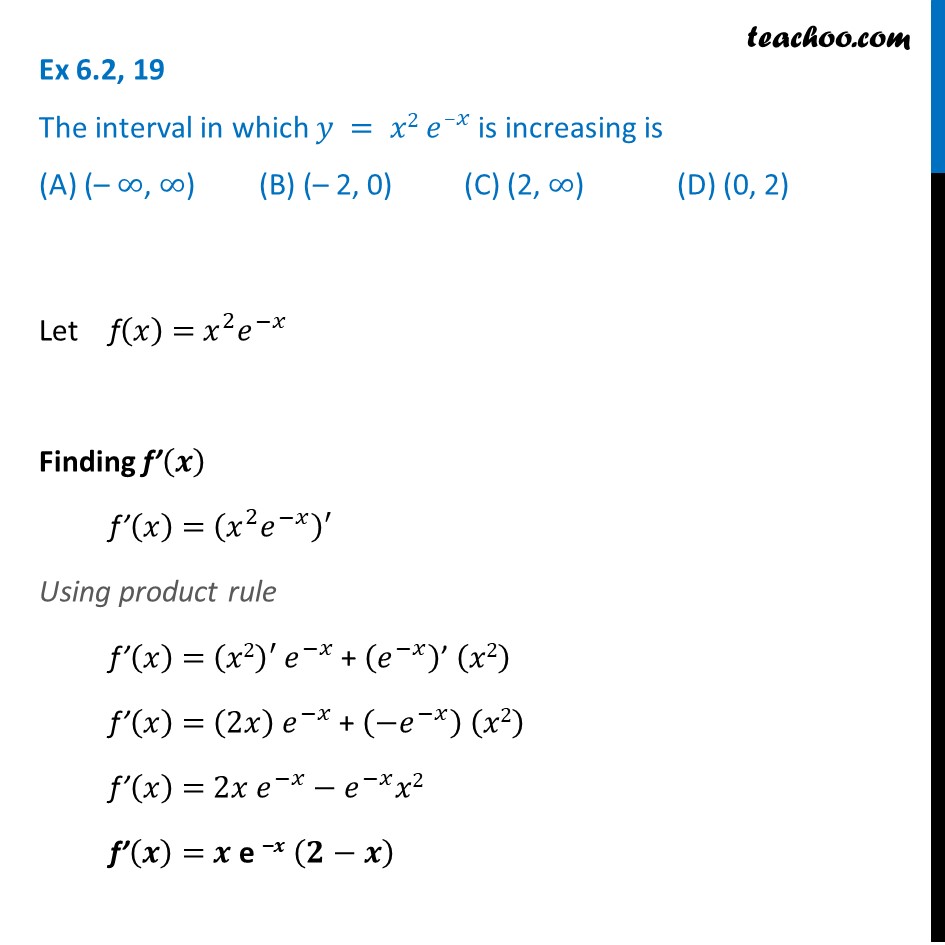



Ex 6 2 19 The Interval In Which Y X2 E X Is Increasing



What Is The Second Derivative If Y Xe X Quora



0 件のコメント:
コメントを投稿